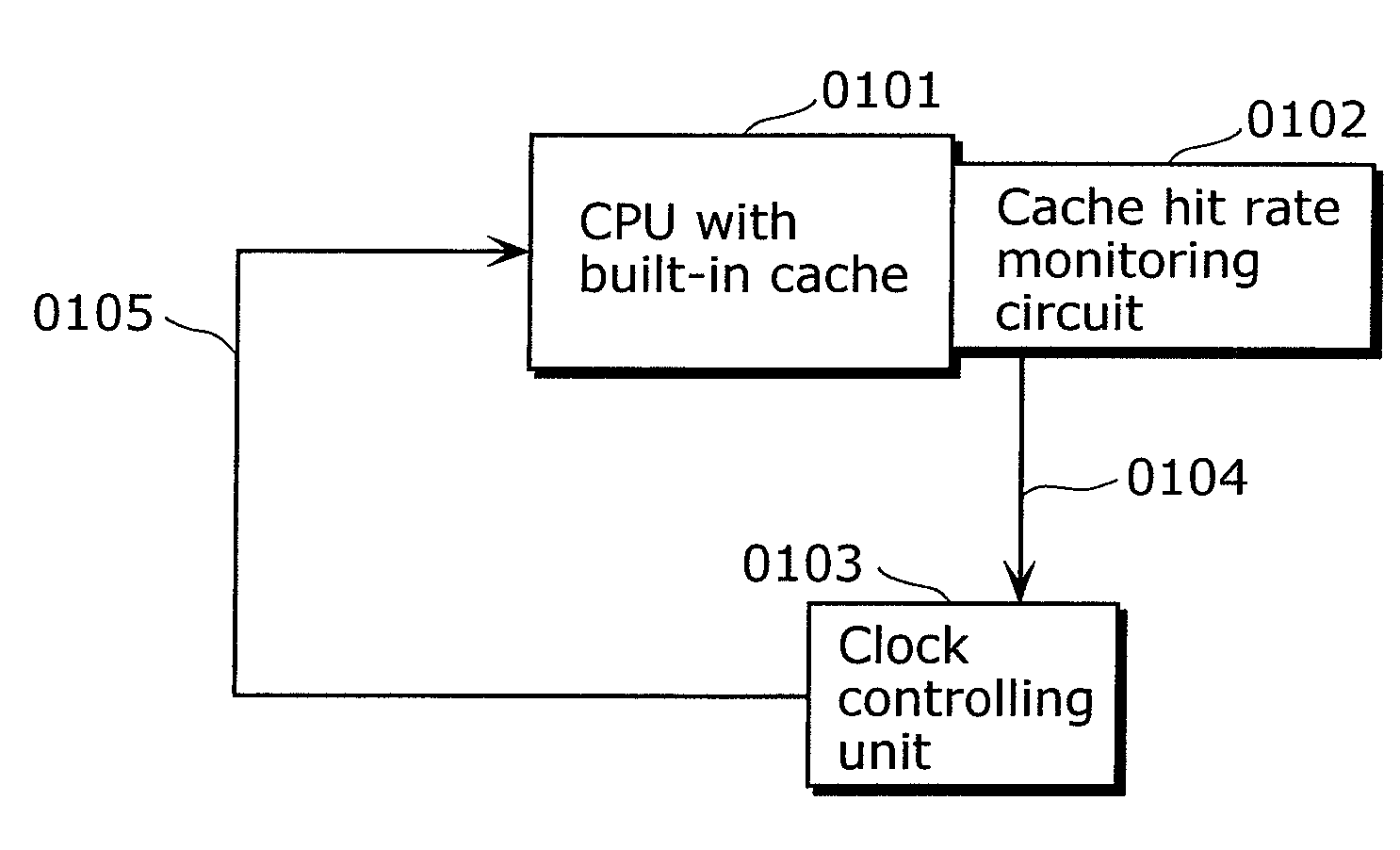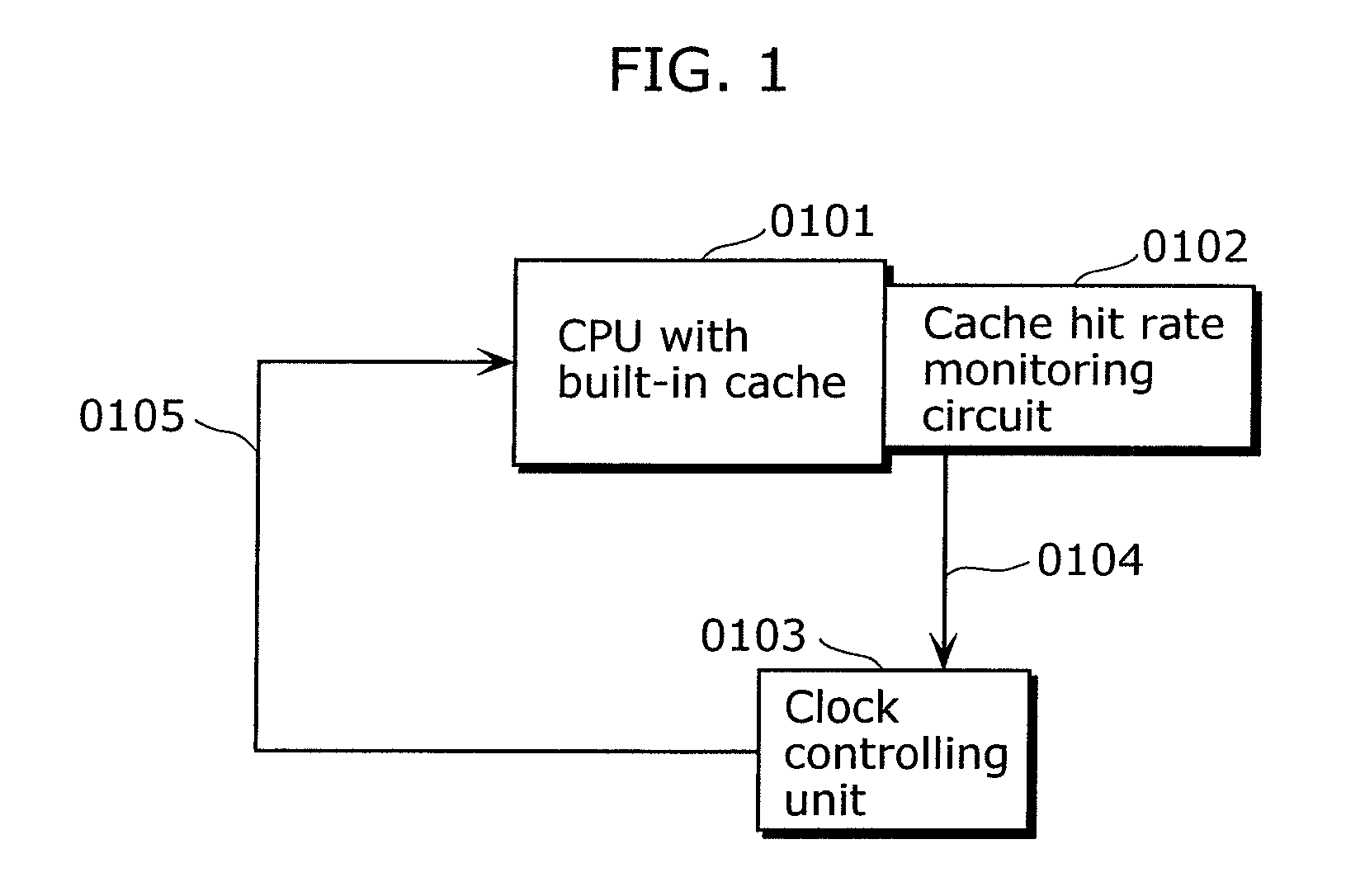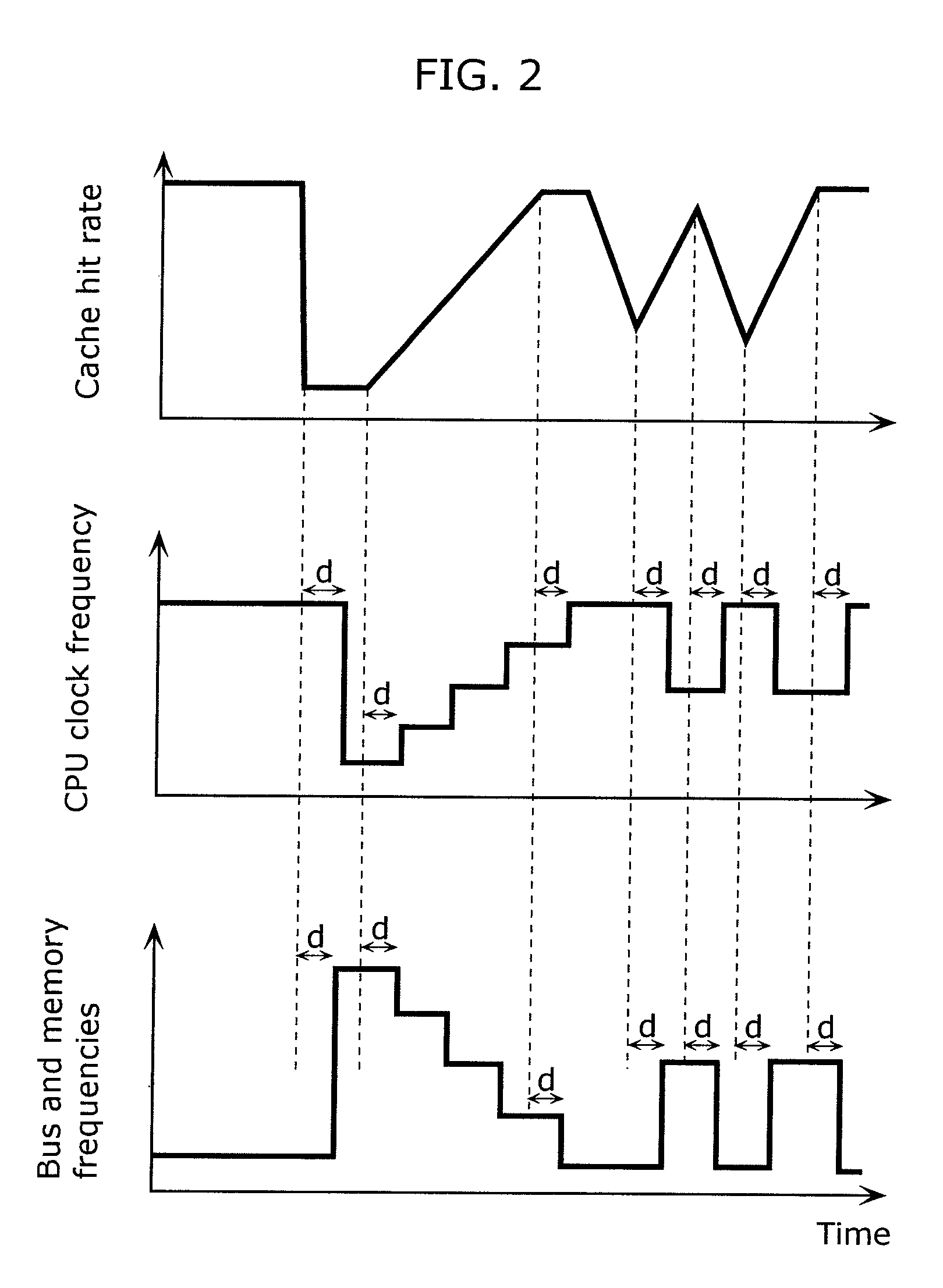Method of controlling information processing device, information processing device, program, and program converting method
a technology of information processing device and program, applied in the direction of generating/distributing signals, instruments, sustainable buildings, etc., can solve the problems of reducing the accuracy of measuring the cache hit rate, unable to achieve an improvement in processing efficiency, and slow response, so as to achieve accurate prediction of the hit rate and the hit rate. , the effect of accurately predicting the hit ra
- Summary
- Abstract
- Description
- Claims
- Application Information
AI Technical Summary
Benefits of technology
Problems solved by technology
Method used
Image
Examples
first embodiment
[0051]The present embodiment describes an information processing device which includes a processor having a cache memory, a clock supplying unit which supplies a clock signal to the processor, and a power unit which supplies a power voltage to the processor. The information processing device predicts a hit rate of the cache memory, controls the clock supplying unit so as to change a frequency of the clock signal in accordance with the predicted hit rate, and controls the power unit so as to change a power voltage in accordance with the predicted hit rate.
[0052]FIG. 3 is a block diagram showing configuration of the information processing device according to the first embodiment. The information processing device includes a CPU 101, a memory 104, a storage medium 111, a clock supplying unit 150, and a power unit 151.
[0053]The CPU 101 includes a cache memory 160, a controlling unit 161, and an interrupt controller 112.
[0054]The cache memory 160 is used as a data cache or an instruction...
second embodiment
[0099]FIG. 9 is a block diagram showing configuration of an information processing device according to a second embodiment. FIG. 9 is different from FIG. 3 of the first embodiment in that a cache hit rate monitoring circuit 103 is added.
[0100]With the information processing device configured in the manner shown in FIG. 9, a cache hit rate predicting unit 201 in a controlling unit 161 obtains information about a current cache hit rate (hardware information) from the cache hit rate monitoring circuit 103, and predicts a cache hit rate 202 based on the obtained information.
[0101]Since the cache hit rate predicting unit 201 predicts the cache hit rate based on the information about the current cache hit rate obtained from the cache hit rate monitoring circuit 103, the prediction accuracy is higher compared to that of the first embodiment. The following is a description of some examples of operations of the cache hit rate predicting unit 201.
[0102]For example, the cache hit rate predicti...
third embodiment
[0113]FIG. 12 is a block diagram showing configuration of an information processing device according to a third embodiment. FIG. 12 is different from FIG. 9 in that the information processing device shown in FIG. 12 has multiprocessor configuration. More specifically, the information processing device shown in FIG. 12 has plural sets of a CPU, a supplying unit, and a power unit, namely, CPUs 114a-114c, clock supplying units 150a-150c and power units 151a-151c.
[0114]With the information processing device configured in such manner as described above, a cache hit rate monitoring circuit 103, an interrupt controller 112, a cache memory 160, and a controlling unit 161 are mounted in each of the CPU 114a-114c, and a clock 102 in each of the CPU 114a-114c is independently controlled. However, it is necessary to arbitrate details of the setting of the frequencies between the CPU clock, the bus clock and the memory clock, or to fix these frequencies. It is also necessary to arbitrate detail...
PUM
 Login to view more
Login to view more Abstract
Description
Claims
Application Information
 Login to view more
Login to view more - R&D Engineer
- R&D Manager
- IP Professional
- Industry Leading Data Capabilities
- Powerful AI technology
- Patent DNA Extraction
Browse by: Latest US Patents, China's latest patents, Technical Efficacy Thesaurus, Application Domain, Technology Topic.
© 2024 PatSnap. All rights reserved.Legal|Privacy policy|Modern Slavery Act Transparency Statement|Sitemap



